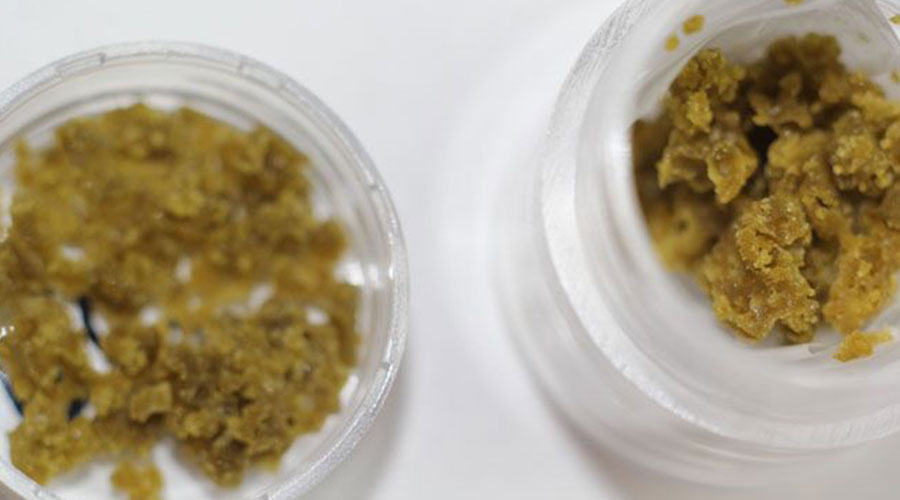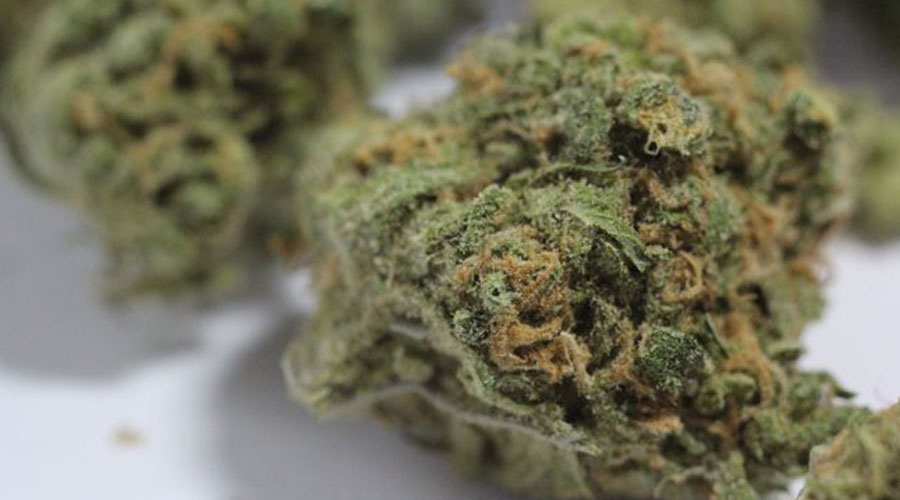Even if you’ve not been paying attention to the rapidly developing cannabis industry, you’re likely familiar with traditional cannabis flower buds. These dense, green, and trichome-covered flower nugs were once one of the only cannabis products available. Today, consumers in legal markets are flooded with a range of cannabis products including edibles, concentrates, patches, tinctures, capsules, topicals, and more.
Concentrates are one of the fastest-growing cannabis products in the market. In fact, the popularity of concentrates is beginning to catch up with flower’s previously unrivaled popularity. Concentrates are typically enjoyed through dabbing in order to get a fast onset of potent effects. If you’re wondering about the difference between flower and dabs, keep on reading.
What are dabs?
Cannabis concentrates are simply concentrated forms of the cannabis plant’s therapeutic cannabinoids, and sometimes, aromatic terpenes. Concentrates come in a variety of types that range in texture, consistency, quality, and potency. Popular concentrate forms include wax, shatter, crumble, oil, live resin, and sauce.
Because of the concentrated cannabinoid content, users only consume a “dab,” or a tiny portion of the concentrate, depending on their desired effects. Users can either consume dabs via a portable vape pen or dab rig, which essentially vaporizes the concentrate to produce a potent inhalable vapor.

What are the benefits of dabbing?
Compared to other consumption methods, dabbing has numerous benefits for medical and recreational consumers. Concentrates contain a high potency of cannabinoids and terpenes that can ease the discomfort from chronic or severe medical conditions. Additionally, dabs remove the harsh-tasting plant matter that can introduce carcinogens into the body when combusted.
Dabbing also provides users with a fast onset of effects. After inhalation, effects will appear within five minutes because the activated compounds immediately enter the bloodstream through the lung’s alveoli openings. This quick introduction of compounds provides users with a stronger potency and flavor than almost any other cannabis products. Overall, dabbing is an effective option for those seeking THC-rich highs.
What is cannabis flower?
Cannabis flower is the starting material of cannabis concentrates. During the marijuana flowering cycle, female cannabis plants mature and produce small flower buds that contain the highest concentration of trichomes compared to the plant’s leaves and stems. Dry flower bud can be consumed alone, in a bowl, joint or dry herb vaporizer, depending on a person’s preference.

Weed vs Dabs: Which is right for you?
The best part of today’s diverse cannabis market is that consumers usually don’t have to choose between cannabis products. For new users, for example, dabs may be too overwhelming. The high-THC content can cause negative side effects in inexperienced users or those with severe anxiety. Dabs may be ideal for users looking for strong, immediate, and long-lasting relief.
Flower, on the other hand, provides consumers with an equally fast onset of effects. Flower may not have as high a THC concentration as dabs, but it can be just enough to give users a mild buzz. If you’re wondering which product is right for you, it may help to understand the key differences between concentrates and flower.
Potency
As mentioned previously, dabs are much more potent than your run-of-the-mill cannabis flower. Even the highest THC concentration among strains don’t compare to the significant cannabinoid content in any type of concentrate. Concentrates can boast between 50 and 90 percent THC. Cannabis flower’s THC content generally ranges between 15 and 30 percent.
Health
Dabs are touted as a smoke-free way to enjoy cannabis. Of course, heating a dab on a hot nail produces a milky white inhalable vapor. But, dabbing doesn’t combust plant matter as smoking cannabis flower does.
Certain dabs, however, can be harmful to your health. Some concentrates are made using flammable solvents such as butane and ethanol that can be left in the final product. Third-party lab testing ensures that any concentrate is pure and safe to consume. For now, the jury’s out on the long-term effects of consuming dabs and flower.
Consumption methods
Cannabis flower can be consumed in a variety of ways. Users can smoke flower out of a glass pipe or bong. Unlike simple pipes, bongs incorporate water into the equation to produce smoother hits. Flower can also be smoked in a joint or blunt. Finally, cannabis flower can be vaporized with a portable vape pen or a desktop vaporizer.
Concentrates have equally varied consumption methods. Dabbing is one of the most popular consumption methods of concentrates. All you do is drop a dab of concentrate onto a hot nail and inhale through your dab rig. Despite its effectiveness, this method may not be completely user-friendly.
Concentrates such as distillates can be infused into edibles while oils can be introduced into capsules, suppositories, topicals and transdermal patches.
Flavor
If it’s all about flavor, the choice may be a difficult one. High grade flower is known to smell great, while some types of concentrates may lose out on terpenes during the extraction process. Live resin or high-terpene full-spectrum extracts such as sauce contain a relatively high percentage of terpenes and aroma compared to other concentrate types.
Safety
Dabs and flower are generally safe products to consume, when consumed responsibly. Smoking cannabis flower can worsen respiratory symptoms and get your finger burned if you’re not careful, but other than that the worst you can expect is mild negative side effects such as dry mouth, red eyes and paranoia, which subsides.
Dabs are also safe to consume, but making them is a whole other story. When making dabs with solvents you run the risk of creating an explosive atmosphere, but some safer home solventless extraction methods have produced potent and flavorful dabs.
Cost Efficiency
Cost-efficiency
Dabs and flower buds differ in price based on quality and product type. Flower buds can contain about 20 percent cannabinoids by weight, while dabs have an average of 80 percent cannabinoids by weight.
A gram of cannabis flower can run you $15 while a gram of concentrate can cost you $60. Generally, the price of dabs and flower is about the same. Of course, prices vary by brand, potency and location. Some concentrates and flower can fall below the listed prices.
Consumption methods can also affect the cost-efficiency of dabs and flower. Smoking flower buds can burn away 60 to 63 percent of THC. Vaporizing flower can reduce cannabinoid loss down to 40 percent. Dabbing concentrates, however, only results in losses about 20 percent of psychoactive compounds.
Generally, cannabis concentrates offer the best bang for your buck. Cannabis concentrates provide a strong dose of potency and aroma with only the most essential cannabis compounds. Dabbing at low temperatures can help preserve more of these compounds and reap even bigger highs.
Discretion
When smoking cannabis flower, the smoke and odor can be overwhelming and pronounced. It’s not the best way to consume discreetly. Vaporizing flower can help improve discretion. Dabs can also be discreetly consumed with a dab pen.
Dabs and flower provide different, but equally satisfying experiences for cannabis users. Luckily, you don’t have to choose between dabs and flower if you live in a legal state that sells these products. While no one consumption method may be perfect for everyone, there’s bound to be one that will let you consume cannabis however works best for you.


Leave A Comment